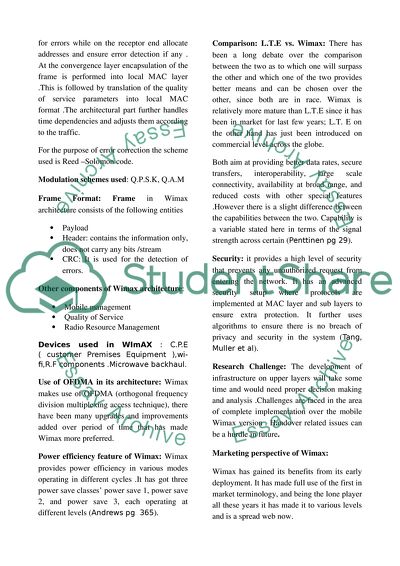Cite this document
(LTE Versus WiMAX Versus 802.22 Article Example | Topics and Well Written Essays - 2750 words, n.d.)
LTE Versus WiMAX Versus 802.22 Article Example | Topics and Well Written Essays - 2750 words. https://studentshare.org/information-technology/1770906-lte-vs-wimax-vs-80222
LTE Versus WiMAX Versus 802.22 Article Example | Topics and Well Written Essays - 2750 words. https://studentshare.org/information-technology/1770906-lte-vs-wimax-vs-80222
(LTE Versus WiMAX Versus 802.22 Article Example | Topics and Well Written Essays - 2750 Words)
LTE Versus WiMAX Versus 802.22 Article Example | Topics and Well Written Essays - 2750 Words. https://studentshare.org/information-technology/1770906-lte-vs-wimax-vs-80222.
LTE Versus WiMAX Versus 802.22 Article Example | Topics and Well Written Essays - 2750 Words. https://studentshare.org/information-technology/1770906-lte-vs-wimax-vs-80222.
“LTE Versus WiMAX Versus 802.22 Article Example | Topics and Well Written Essays - 2750 Words”. https://studentshare.org/information-technology/1770906-lte-vs-wimax-vs-80222.


